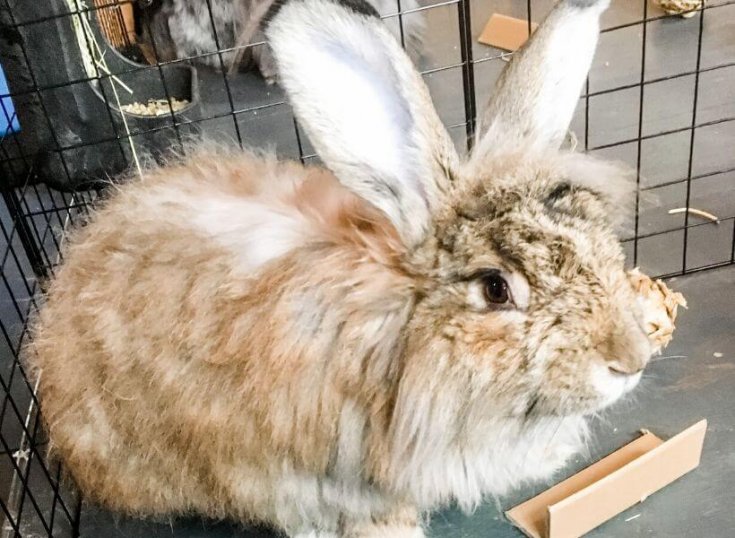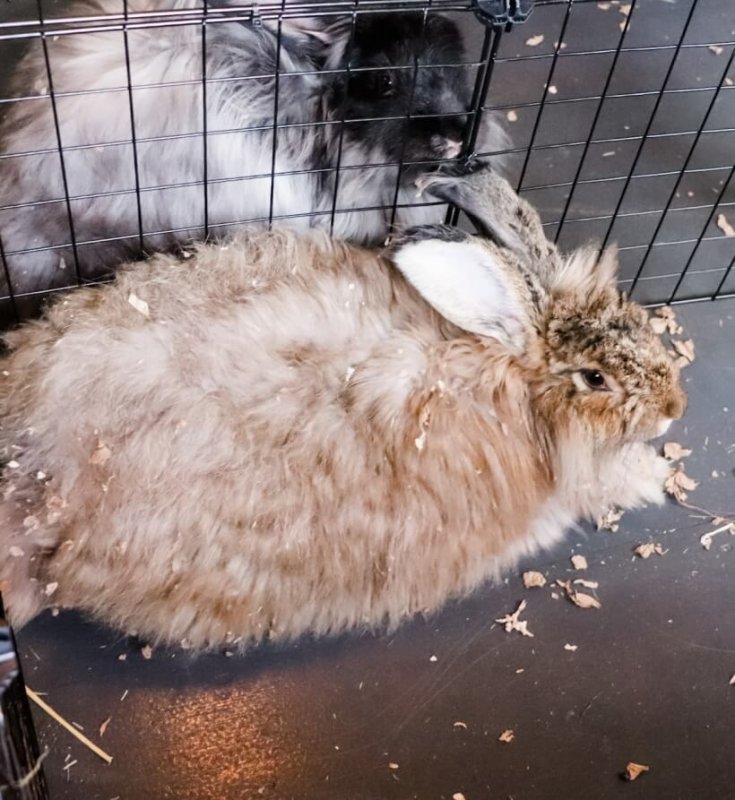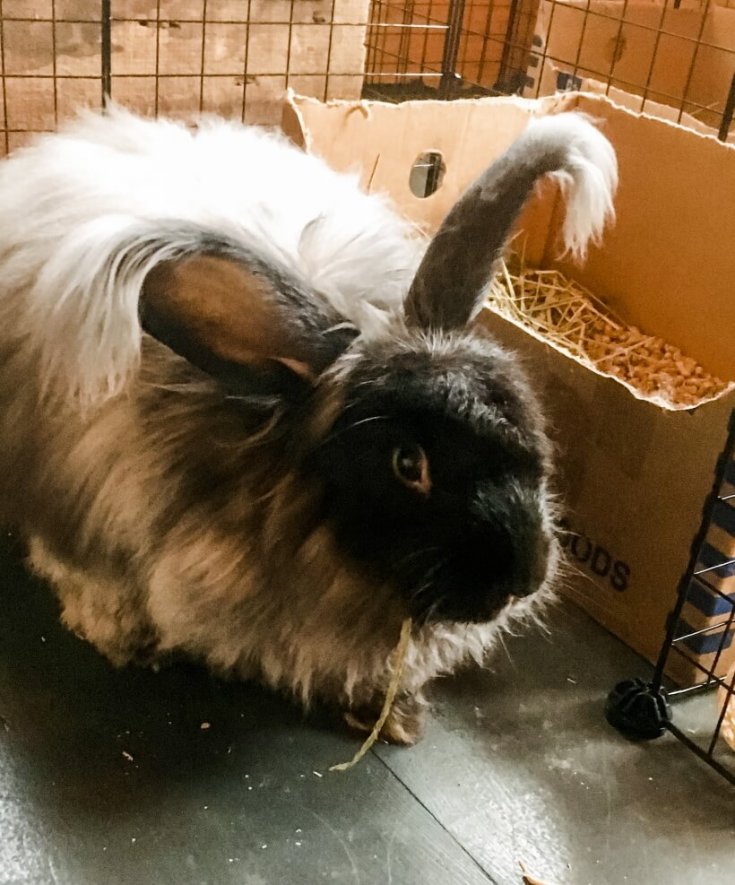Litter Box Material for Angora Rabbits That Won’t Get Trapped in Fur
Litter box material for angoras needs to accomplish a few things. It needs to be super absorbent. It needs to be safe and not cause impaction. It needs to stay out of the fiber (which is the biggest obstacle). And if it can be composted, well that’s just gravy.

Angoras are fabulous fiber animals and a wonderful reason to add rabbits to your homestead.
I did the stupidest thing the other day. Like, when I tell you, the angora rabbit owners amongst you are going to groan and say “oh no she didn’t.” Yes. Yes, she did. See, we got these angora rabbits to be fiber animals and pets for the boys. They each picked out one and we named them Pistachio and Guster. That’s not relevant to the story, but I feel you should know. So we brought them home. I thought I had sufficiently prepared for them, right down to the litter box.
I used Carefresh Small Pet bedding in the boxes per the suggestions from numerous bunny-loving friends. The problem… they don’t have angoras. They have shorthairs. That’s where it all went wrong.
Carefresh and Angoras Don’t Mix
For those of you that don’t know, Carefresh is a natural reclaimed paper fiber. It’s great for the environment and it degrades easily (which is great for my compost pile). Do you know what happens when you put a creature with 4″ of fine wispy hair on reclaimed paper fiber? Let me tell you. That paper fiber all but disappears… or so it seems. It actually gets sucked up from the litter box and into the rabbit’s fiber in an almost magical manner. Right to the skin. Hours HOURS were spent trying to get this paper nightmare out of my angora rabbits’ hair.
This was NOT going to work.

What Angora Litter Box Litter Needs to Accomplish
I researched and it seems most people who raise fiber rabbits do so on wire floors. That management method didn’t work with our plans for the rabbits. We wanted them to enjoy wide open spaces. Some friends suggested pine shavings. That had similar (though not nearly as detrimental) results as the paper fiber. Others suggested clay litter, but I had concerns about clay impaction. Finally, someone suggested I check out wood pellets. They should be heavy enough to stay put and not migrate into the fiber. So I headed off to the local feed store.
While talking to the lovely folks at Paris Farmers Union, I discovered that wood pellet bedding and wood pellets for pellet stoves are exactly the same things, provided you purchase softwood pellets. The only difference? Price. In my neck of the woods, bedding pellets for horses come in a 40-pound bag for $9.99. Wood pellets marketed for cats (again, the same product in a different package) are $16.99 for that same 40 pounds. A 40-pound bag of softwood stove pellets costs $5.59. Cha-ching!

Do Wood Pellets Work?
I brought home a bag for a test drive. Success! The rabbits happily use them and they cost LESS than the other options I had tried. Beyond the criteria of the rabbits’ willingness to use it and it being fiber-friendly, I needed their litter to be compostable as well. It is! When we change out the boxes about half of the litter is already what I’ll call “blown out.” As soon as it rains on the litter in the compost pile, the rest blows out and nearly disintegrates. With one turn, it blends seamlessly into the pile. And for those of you with concerns about having wood materials in the garden, check out Back to Eden Gardening. It will change your life.
Not sure how to litter box train a rabbit? I have a simple 4-step guide for you.


I’m so going to try this! My white angoras fur is such a pain to get all the bedding out of it. Ive been struggling to figure out what to do- I’ve tried different types of litter boxes, which never really worked, training pads were wasteful, and of course regular care fresh bedding always got caught in her fur. Thank you!
We are brung home two angora rabbits tomorrow and I was racking my brain trying to figure out a littler box method that would work for my compost as well. So thankful that you posted this!!
I am so sorry, please forgive me for laughing. That poor bunny, who knew nothing, looked so funny covered in shavings. I probably would have done the same thing. I, too, use fiber for spinning to make yarn. I feel your pain. Good luck.
Thank you for this valuable information! I do foster care for rabbits from my local humane society and sometimes have exactly the problem you describe with the angoras. With most rabbits, I bed them on shredded paper. This gets rid of my shredded documents and yes, it goes into the compost heap just fine.
That’s awesome what you do Beth. I’m glad you found this helpful. Happy bunny snuggling!